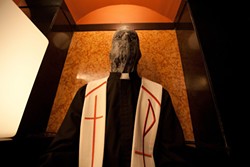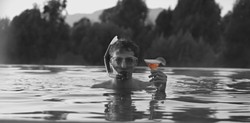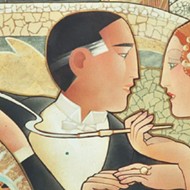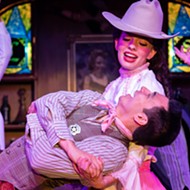[
{
"name": "Promo Temp Targeted",
"id": "PromoTempTargeted",
"class": "inlineCenter",
"insertPoint": "4",
"component": "15511697",
"requiredCountToDisplay": "0"
},
{
"name": "Ad - Medium Rectangle CC01 - 300x250 - Inline Content",
"class": "inlineCenter",
"insertPoint": "8",
"component": "15582119",
"requiredCountToDisplay": "12"
},{
"name": "Ad - Medium Rectangle LC01 - 300x250 - Inline Content",
"class": "inlineCenter",
"insertPoint": "18",
"component": "15582122",
"requiredCountToDisplay": "22"
},{
"name": "Ad - Medium Rectangle 9 - 300x250 - Inline Content",
"class": "inlineCenter",
"insertPoint": "28",
"component": "15582121",
"requiredCountToDisplay": "32"
}]
Towering five feet over Sixth Street in Austin is a live video feed of the Grumpy Cat. It looks like that scene in Blade Runner where the Japanese woman eating a strawberry is projected on the side of a skyscraper, except this image fills me with a sense of existential terror so stark I can scarcely articulate it. Over the course of the nearly week-and-a-half festival, thousands of the best and brightest artists and their fans will line up to meet a cat. A creature that is barely sapient. Just how weird is it to be alive right now? It’s the end of the world; bring on the dancing girls.
This is South By Southwest, the festival for which Downtown Austin basically shuts down, showcasing the bleeding edge of music, movies, and videogames. If the San Diego Comic Con is Nerd Prom, and Butt Numb-A-Thon (also an Austin institution) is Geek Christmas, then SXSW is Hipster Hanukkah—a seemingly never-ending holiday that holds boundless potential at the outset, only to reveal at the end that half of your presents are socks.
It’s hard to think of another city that would simply block off the heart of its downtown for more than a week and turn it into a booze-and-drug-fueled playground, but c’est l’Austin.
Music forms the core of the experience. Dave Grohl debuted his new band. The Flaming Lips and Tegan & Sara played free shows. Every bar in Austin with a stage (so every bar in Austin) offered music from open to close, and those who couldn’t find a stage just played in the street, where they competed for attention and tips with living statues, men in bowler hats and braces who jump on broken glass, and the giant soul-chilling projection of the grumpy cat.
Film is quickly making up the distance, though. The programmers at SXSW have forged an admirable balance between high-profile Hollywood films (the new Evil Dead and The Amazing Burt Wonderstone both debuted here this year), genuine indies, and everything in between.
Cult figures like Bruce Campbell, Rob Zombie, and Joss Whedon stalk the streets, Whedon showcasing his Much Ado About Nothing; a long-held passion project, his noir update of the Shakespeare comedy was self-financed and shot on a break from The Avengers with his regular stable of actors. It’s a project whose announcement caused the heart of every high school theater geek in America to explode with happiness. Though iambic pentameter doesn’t exactly roll off of every tongue, and the rushed shooting schedule does show with some occasionally prosaic blocking, enthusiasm makes up for a lot, and Whedon’s love of the material, and the cast’s love for him, clearly shines through.
Also playing was Calvin Reeder’s The Rambler, in which an ex-con travels across the country to his brother’s farm, encountering the surreal and grotesque along the way, as well as a recurring woman who dies a violent death each time they meet. The film feels like Alex Cox and Wim Wenders collaborated on a horror film, which—depending on which era in those two filmmakers’ careers you’re talking about—is either a very good or very bad thing.
The Rambler has already engendered a fair amount of controversy from its Sundance debut and has drummed up a fair amount more after its SXSW screenings. I am of two minds about it. On the one hand, Reeder has impeccable visual instincts and has found a group of collaborators who can back him up with skillful editing, saturated cinematography, and an eerily disjointed score. Reeder crafts sequences in The Rambler that create a genuinely upsetting amount of disquiet.
On the other hand, The Rambler has an almost fatal lack of cohesion to it. The film started life as a short, and more than anything The Rambler feels like a series of short films that have been stapled together, and the quality varies wildly among the pieces—some eerie, haunting, and funny, others just repetitive and gross. While many have called The Rambler Lynchian, it’s something of a coin toss whether you’ll be thinking “David” or “Jennifer” in any given scene. Asked if he had to compromise at any point in making The Rambler, a visibly bemused Reeder simply answered, “No.” It was perhaps the least surprising statement of the entire festival.
Just as narratively opaque as Reeder’s film—but a good deal more effective—is Rob Zombie’s The Lords of Salem, which feels like a genuine evolution for the filmmaker. Far from the violent ’70s aesthetic with which Zombie made his reputation, The Lords of Salem instead draws upon the dreamy legacy of the European horror of Polanski, Mario Bava, and Jean Rollins, as well as the short-lived burst of late-’70s American surrealist horror like Let’s Scare Jessica to Death and The Messiah of Evil.
The film follows a “Zoo Crew”-style DJ who invokes a nearly 400-year-old curse and becomes the target for a Satanic coven, losing her mind piece by piece over the course of a week.
Though it would be a lie to call the film restrained, The Lords of Salem doesn’t find Zombie relying on any of the usual tricks. Gone are the usual bouts of ultra violence and white trash patois, and in their place is a tightly controlled, genuinely nightmarish run of imagery. Zombie shot the film on his lowest budget yet, and on a 28-day shoestring schedule that forced him to cut his ambitious script back. Neither shows, and though its reach occasionally exceeds its grasp, The Lords of Salem isn’t just the best-looking film in Zombie’s career, it’s one of the best-looking American horror films not called The Shining, period.
And so ends another SXSW. Some good films, some good music, and a minor political scandal later, and all is right with the world. They’ll all be back next year—though hopefully they’ll leave the cat at home.
Contact New Times film columnist Bryce Wilson via Arts Editor Anna Weltner at [email protected].











